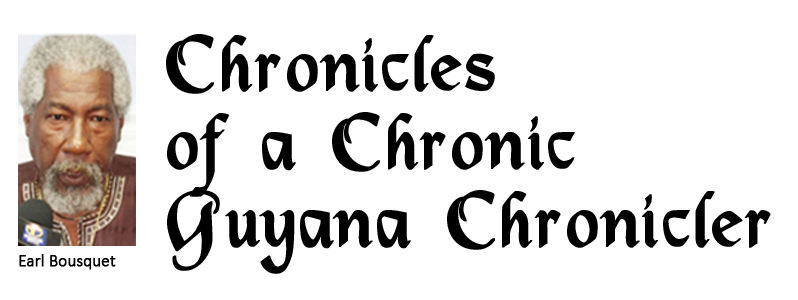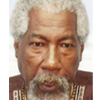Part 5: Different strokes for different folks
FROM Bob Marley’s ‘I shot the sheriff’ to Tupac Shakur, from DMX’s bullet-ridden Hip-Hop ballads to Coolio’s ‘Gagsta’s Paradise’ to Eminem’s ‘When I’m Gone’, popular Caribbean and Black American singers have tried to explain the inexplicable intricacies of living in the fast lane, whether in a Caribbean ghetto or a classic American ‘hood’ (neighborhood).
Using only the sound of music – tempo, beat and rhythm — as an elastic yardstick to measure and adore singers, the last thing on the minds of Caribbean and African American fans of the types of music they love will allow them to search for hidden or ignore clear messages sung between the lines blurted by their favorite singers.
So, admiration trumps any inclination to hear or feel any ‘bad vibes’ while going with the flow of the rhythm.
Bob Marley’s explanation of why “I shot the sheriff, but I didn’t shoot the deputy” and Coolio’s question “Why are we so blind to see the ones we hurt are you and me?” both do underline how each can be heard and seen as both good and bad – and in between – but never as glamorising or warning against gunplay.
Why? Because when it comes to music, Caribbean people hear and sing what they want (to).
However, just as Caribbean and American societies degenerated into violence as gang warfare accelerated in scale and sophistry over time, so did the rise of violent lyrics in Caribbean and Black American music.
Not that the music is actually encouraging violence, as some claim, but songs preaching violence, anti-women and/or even anti-LGBTQI sentiments can be more popular and therefore earning more for singers and producers than songs and music promoting ‘Peace and Love’.
Likewise with crime reporting: the mainstream media’s narrative, dictated by headlines that can grow profits, always settles for simply reporting deadly facts and statistics, with gruesome details.
But the Caribbean reality is far different from that being painted by those who feel it’s already a gangster’s paradise.
As it turns out, outside eyes see the state of crime within the Caribbean Community (CARICOM) quite differently to Caribbean citizens and governments, police and security forces, rights advocates, and the press.
They obviously use different spectacles, some shaded more by dark or red-alert statistics and geography than homicides corruption and gang-related crimes.
Take two recent global listings of the 10 countries said to have the worst crime rates globally, half of which are in the Caribbean and Central America, each including three CARICOM member-states in the world’s worst Top Ten countries by crime.
The World of Statistics (WOS) and the World Population Review (WPR) last week issued separate lists of the “most criminal” countries in the world.
The WOS List of ‘The Top Ten World’s Most Criminal Countries’ are: 1. Venezuela, 2. Papua New Guinea, 3. Afghanistan, 4. South Africa, 5. Honduras, 6. Trinidad & Tobago, 7. Guyana, 8. Syria, 9. Somalia and 10. Jamaica.
The WPR’s listing of the Top Ten countries with the “The highest crime rates globally” are: Venezuela (83.76), Papua New Guinea (80.79), South Africa (76.86), Afghanistan (76.31), Honduras (74.54), Trinidad and Tobago (71.63), Guyana (68.74), El Salvador (67.79), Brazil (67.49) and Jamaica (67.42)
Interestingly, according to the two lists, the ‘most criminal’ countries are not necessarily those with the ‘highest crime rates’ and while one claims five of the Top Ten from The Caribbean and South America, the other increases the number to seven.
Even more interesting, while three CARICOM member-states are included in both Top 10s, the USA ranks at No. 55, the UK at No. 65 and India at No.77, with Qatar ranking lowest at 136, with a crime rate of 12.13 per 100,000.
The WOS website describes itself as “a global network of nearly 2,360 organisations worldwide committed to compiling statistics to increase public awareness”; and the WPR states it’s “an independent US-based statistics agency without political affiliation”.
But while the Caribbean press tends to assess national crime rates mostly by the number of homicides, WOS and WPR have found different and more-elastic yardsticks to measure crime, which lump death, theft and misdemeanors together with geography and population.
The Louisville, Kentucky mass shooting a week ago marked the 146th already this year in the USA, but by the two measurements, that’s only one yard out of a mile measured
But the region’s press continues to cling to old traditional headline-grabbing approaches that see, for example, a major Trinidad & Tobago online newspaper’s headline for the related story was ‘T&T ranked 6th most criminal country in the world’.
The story quoted selected sections of the reports that unfairly compare Trinidad & Tobago, Guyana and Jamaica’s rankings (6th, 7th and 10th respectively) with those of Scandinavian and other European countries – and the republic’s National Security Minister as saying he had no comment.
But nothing in the reports noted that the methodology used to assess and conclude is totally different from that employed in the Caribbean, where the state of crime is assed according to what the media highlights most.
The vast majority of CARICOM member-states didn’t even make it on the list of 136 nations and territories (including Hong Kong, Puerto Rico and Taiwan), but just the fact that three did has resulted in headlines and assessments that amount to no less than self-inflicted wounds by the regional media to the region by swallowing wholesale and regurgitating reports on the state of crime in the region.
That not only spits in the face of both perception and reality, but also confirms that when it comes to keeping crime records clear where they look most dirty. Our media simply unconditionally accepts that when it comes to the Caribbean, those outside looking in are free to use different strokes for different folks.
Meanwhile, we continue to wonder and ponder over whether there’s any merit in trying to figure out whether the Caribbean is a gangster’s paradise.


.jpg)











